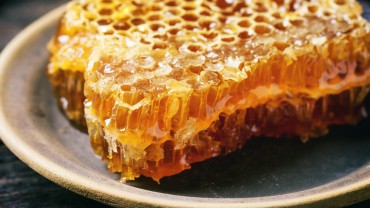Crepitus Symptoms, Causes and Natural Treatments
Crepitus is a term used to describe a condition that causes the skin to become dry and scaly. It is not a disease but rather a symptom of other health problems. It can be treated with crepitus exercises which help to prevent it from returning.
Crepitus, or crepitation, is the sound of grinding, creaking, grating, snapping, or crunching coming from your joints. Crepitus also refers to the cracking noises made by the lungs during a respiratory ailment and the sounds made by bones following a fracture.
Pain may or may not accompany the noises in joints, depending on the underlying reason. Some sources of crepitus, such as air bubbles in a joint, may or may not produce discomfort. Arthritis, a disorder in which cartilage deteriorates and causes friction between bones, may cause chronic and sometimes severe discomfort.
The most typical location for creaking, popping, or crunching noises is the knee, although it may occur in practically any joint, including the neck, spine, hips, shoulders, or ankles. There is seldom a reason to be concerned when the noises aren’t accompanied by discomfort. However, if your crepitus symptoms include pain or swelling, or if they are severe, see your doctor.
What Is Crepitus?
The cracking, grinding, crunching, or grating noises that emanate from a joint when moved, the lungs during a respiratory ailment like bronchitis, or after a bone has been shattered are all examples of crepitus.
In most cases, knee popping, neck cracking, and other joint sounds are deemed totally normal and have no reason for concern. However, certain parts of the body, such as the knees, ankles, neck, and lungs, are especially susceptible. This illness may manifest itself differently in various areas and be caused by various underlying disorders.
Knee Crepitus is a painful condition that affects people of all ages. Pain may or may not be present when it develops in the knee. When you lay your palm over the knee, you can often feel and hear the snap or crunch. The sound might be muted or very loud. Crepitus of the knee may indicate rheumatoid arthritis or osteoarthritis if it is accompanied by pain.
Ankle Crepitus is a condition in which a person’s ankle becomes swollen. Crepitus of the ankle may be accompanied by discomfort and an irregular range of motion. Crepitus ankle noises are often grinding rather than popping sounds like in the knee or ankle. Ankle osteoarthritis may cause grinding sounds.
Neck Crepitus: Almost everyone’s neck pops or cracks from time to time, and it’s usually harmless. The joints in the neck and spine are lubricated by a fluid that runs between them. As the bones rub together while out of position, crepitus neck noises might arise.
Lung crepitus, also known as bibasilar crackles, is the sound your lungs produce when there is too much fluid in your lungs or airways. Crepitus lung noises are typically associated with upper respiratory illnesses such as bronchitis, pneumonia, pulmonary edema, COPD, asthma, or interstitial lung disease. They may be heard as bursting bubbles or crackling sounds.
Symptoms and Signs
Crepitus has different indications and symptoms depending on which joint is afflicted.
Knee Crepitus
- Knee popping (painful or not)
- The following are examples of co-occurring symptoms:
- Walking or bending the knee causes pain.
- Stretching or exercise may help with stiffness.
- On the inside of the knee, there is tenderness or pain.
- Knee swelling regularly
Ankle Crepitus
- When the ankle is rotated, it makes a grinding or grating sound.
- The following are examples of co-occurring symptoms:
- Inflammation of the joint
- The ankle is swollen.
- Flexibility is being lost.
- The range of motion is restricted.
- Walking is difficult.
- Weight-bearing difficulties
- prone to tripping and falling
Neck Crepitus
- The most frequent symptom is neck popping.
- The following are examples of co-occurring symptoms:
- Whether you’re popping with or without discomfort, it’s a good idea to
- stiffness in the neck
- Due to discomfort, you have a limited range of motion.
Lung Crepitus
- Sounds of bursting bubbles or wheezing
- The following are examples of co-occurring symptoms:
- Breathing problems
- Unusual exhaustion
- Pain or pressure in the chest
- a feeling of being suffocated
- Cough
- Fever
- Wheezing
- Swelling in the arms and legs
Causes
Crepitus in the joints may be caused by a variety of factors, including:
- In the synovial fluid, there is a buildup of gas.
- Osteoarthritis
- Rheumatoid arthritis is a kind of arthritis that affects the joints.
- Injury
- Tear in the meniscus
- Knee pain in runners
Lung crepitus may be induced by a variety of factors, including:
- Smoking
- Lung illness in the family
- Exposure to irritants in the lungs
- Bacterial or viral infection
Risk Factors
Risk factors for osteoarthritis and rheumatoid arthritis include:
- Being overweight is a problem.
- Injury in the past
- Arthritis runs in the family
- A sedentary lifestyle
- Inflammation
Treatment
Unless the noises are accompanied by pain, swelling, or other symptoms, therapy for crepitus is usually unnecessary. However, depending on the underlying cause of additional symptoms, your medical team may prescribe one or more of the following treatments:
- RICE stands for Rest, Ice, Compression, and Elevation. Tears, edema, or damage to the meniscus.
- To repair rips in the meniscus, arthroscopy surgery is used.
- Pain and inflammation relief with over-the-counter NSAIDs and other pain relievers
- Pain relievers on prescription
- Anti-inflammatory drugs on prescription
- Corticosteroids on prescription
- Topical medications on the prescription
- If an injury causes crepitus, surgery may be required.
- Knee osteoarthritis and stem cell injections
- Following knee replacement surgery, crepitus may need open or arthroscopic debridement.
Treatment for pulmonary crepitus:
- Inhaled steroids are used to treat airway irritation.
- Bronchodilators are medications that relax the airways.
- Treatment with oxygen
- Rehabilitation of the lungs
6 Natural Treatments
1. Boswellia Serrata
This strong plant extract, also known as frankincense oil, is a top-natural arthritis therapy because it boosts the immune system, reduces inflammation, relieves joint pain, and improves mobility. Researchers looked examined the effects of Boswellia serrata on patients with osteoarthritis in a clinical study published in the International Quarterly Journal of Research in Ayurveda.
One group received 6 grams of Boswellia serrata, split into three equal doses after meals. In contrast, the other received the same quantity plus a topical Boswellia serrata ointment to apply to arthritic joints. As a result, both groups’ mobility, joint edema, and joint discomfort improved significantly, as did serum triglyceride levels.
2. Turmeric
Turmeric has long been known for its anti-clotting, anti-depression, anti-obesity, anti-cholesterol, anti-inflammatory, and anti-inflammation properties. It is also one of the greatest natural pain relievers available. In reality, according to the findings of a review of randomized clinical studies published in the Journal of Medicinal Food, 1,000 milligrams of curcumin extract (the active component in turmeric) taken daily may be useful in treating arthritis.
Researchers examined osteoarthritis and rheumatoid arthritis symptoms, such as pain, stiffness, mobility, and inflammation. They found that 1,000 mg per day may have pain-relieving benefits equivalent to over-the-counter medicines like ibuprofen. However, larger investigations are required, according to the researchers.
3. Fatty Acids Omega-3
Omega-3 fatty acids, according to the Arthritis Foundation, may help lower inflammation in the body and can be beneficial in the treatment of inflammatory arthritis.
In a clinical study published in the journal Annals of Rheumatoid Diseases, researchers discovered that taking a high dose of fish oil — 5.5 grams daily — resulted in greater pain relief, a lower failure of traditional therapy (DMARD therapy), and a higher rate of remission in people with newly diagnosed rheumatoid arthritis.
4. Collagen
Collagen, which is responsible for the health of the skin, bones, joints, and tendons, is crucial for anybody suffering from joint crepitus. Collagen acts as a lubricant within the joints, enabling the bones to move freely without discomfort. In addition, collagen hydrolysate improves joint health. According to a clinical trial done by researchers at Penn State University’s Department of Nutrition and Sports Nutrition for Athletics, it may lower the risk of joint degeneration in high-risk populations.
According to experts, oral supplements of collagen type V may decrease inflammation, minimize joint damage, and enhance arthritis therapy in a new clinical trial published in the journal PLOS One. Collagen type V is recommended for those with inflammatory joint illnesses because synovial tissues are often impacted, and this form of collagen is exposed during synovial inflammation. However, they do say that further research is needed to prove cellular immunity and other activities.
Collagen supplements of high quality, especially bovine collagen, may aid with arthritis, digestive health, tissue repair, and skin quality. To reduce arthritis and crepitus symptoms, take a daily grass-fed bovine collagen supplement.
5. Workout
According to the Mayo Clinic, staying in motion is a fantastic natural muscle relaxer. Likewise, exercising is a terrific method to decrease fluid accumulation improve mobility, flexibility, weariness, and joint discomfort for individuals with arthritis or joints that creak, crack or pop.
Low-impact activities like walking are encouraged, but range-of-motion exercises are also necessary to reduce stiffness. These exercises are intended to help your joints move through their whole range of motion. Arm circles, rotating your neck side to side, and rolling your shoulders forward and back are all examples of this.
It is also critical to strengthen the joints’ muscles to protect them. If you have inflammatory arthritis, weight training is beneficial three times a week; however, you should rest one day between sessions. Choose low-impact aerobic workouts that are gentle on your joints for better cardiovascular health. Swimming, walking, Pilates, cycling, and yoga are all good things to do.
6. Use a humidifier or a hot shower
The steam from a hot shower might help release phlegm and relieve symptoms if you have pulmonary crepitus. Use a humidifier in your bedroom if you live in a dry region to provide moisture to the air.
If your humidifier has an essential oil cup, sprinkle a few drops of eucalyptus or peppermint oil into it to alleviate airway irritation. These two essential oils may also be combined with coconut oil in equal quantities to make a DIY vapor rub that may help reduce symptoms.
How to Prevent It
Diet is one of the most effective approaches to avoid crepitus. Eat an anti-inflammatory diet to prevent inflammation from building up in your body and joints. According to the Cleveland Clinic, eating foods that lower inflammation before the onset of arthritis is critical to both avoiding and alleviating pain.
Remove all nightshades from your diet if you have arthritis or another autoimmune illness since there is some evidence that they may cause increased inflammation and discomfort in some individuals. Slowly reintroduce them to see whether they need to be entirely eliminated from your diet.
Anti-inflammatory foods to add to your diet include:
- Cold-water fish are taken in the wild, such as salmon, tuna, sardines, and anchovies.
- Blackberries, cherries, raspberries, and blueberries.
- Kale, broccoli, Swiss chard, and spinach.
- Walnuts, pine nuts, almonds, and pistachios.
- Olive oil
Remove any items that you are allergic to from your diet. Among the most common food allergies are:
- Wheat
- Soy
- Cow’s milk in its traditional form
- Eggs
- Peanuts
- Nuts from the trees
- Fish
- Seafood
Foods to avoid if you have a rubber latex allergy include:
- Apple
- Avocado
- Banana
- Carrot
- Celery
- Chestnut
- Kiwi
- Melons
- Papaya
- Potatoes in their natural state
- Tomatoes
Among the other precautionary measures are:
- Keeping a healthy weight is important.
- Exercising for at least 30 minutes five days a week is recommended.
- Including flexibility-focused workouts like Pilates and yoga in your routine helps maintain your joints and muscles in good shape.
Precautions
According to Harvard Medical School, crepitus of the knee may increase your chance of getting osteoarthritis. In addition, according to the research, popping and cracking, particularly in the knees, may indicate future arthritis, and crepitus can place you at a greater risk of having joint discomfort in the next year.
Last Thoughts
- The word “crepitus” refers to the popping, cracking, grinding, or grating sounds that joints may make.
- These noises aren’t usually cause for alarm. However, talk to your doctor if they’re accompanied by discomfort, edema, or reduced movement.
- Crepitus most often affects joints such as the neck, back, knees, shoulders, and ankles, but it may also impact the lungs due to an upper respiratory disease.
- The traditional approach to treating crepitus utilizes pain medications or anti-inflammatories to address the underlying cause.
- The key to preventing inflammatory joint problems is eating well, exercising regularly, and keeping a healthy weight.
- The six natural therapies for crepitus symptoms are Boswellia serrata, turmeric, omega-3 fatty acids, collagen, exercise, and a hot shower or humidifier.
Frequently Asked Question
How do you get the air out of your joints?
A: There are two main ways to get the air out of your joints. The first is by taking deep breaths, which would be the one recommended in this scenario since it doesnt hurt as much, and you’re theoretically getting more oxygen into your body if you use that method instead.
The second way to get the air out of a joint is by using an inflated balloon or tennis ball (the harder kind) between the fingers and knuckles on both hands, then pushing them together hard enough for the pressure to cause pain caused by blood rushing into the area around where they connect. This will make it easier for any excess gas buildup in those areas to escape without having trouble breathing because some small amounts may still seep through due to tiny holes not blocked well enough with either technique alone.
FDA Compliance
The information on this website has not been evaluated by the Food & Drug Administration or any other medical body. We do not aim to diagnose, treat, cure or prevent any illness or disease. Information is shared for educational purposes only. You must consult your doctor before acting on any content on this website, especially if you are pregnant, nursing, taking medication, or have a medical condition.
HOW WOULD YOU RATE THIS ARTICLE?





